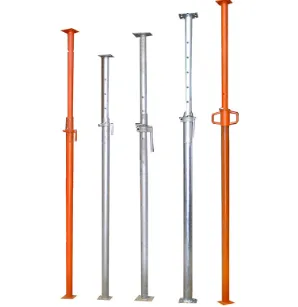Ara . 12, 2024 14:45 Back to list
Considerations for Buying Scaffolding
Scaffolding is an essential component in the construction industry, providing temporary support to workers and materials during the construction, maintenance, or repair of buildings. The right scaffolding system can improve safety, efficiency, and accessibility on the job site. Whether you're a contractor looking to purchase scaffolding or a DIY enthusiast seeking cheap scaffolding, understanding the different types, advantages, and factors to consider when buying scaffolding is crucial. In this article, we explore scaffolding options, including cheap scaffolding, and provide tips on how to build scaffolding and where to find scaffolding for sale.

What is Scaffolding?
Scaffolding refers to a temporary structure used to support workers, tools, and materials during construction or maintenance work. It is typically made from materials like steel, aluminum, or wood, designed to ensure safe working conditions at elevated heights.
Key Features of Scaffolding:
- Modular Design: Scaffolding systems are generally modular, meaning they can be customized for different heights and requirements.
- Safety: Designed to support workers and tools, scaffolding includes guardrails, ladders, and other safety features.
- Flexibility: Can be adapted to a wide range of projects, from residential buildings to large-scale commercial structures.
Types of Scaffolding
There are several types of scaffolding, each suited to different construction needs. The most common types include:
- Tube and Clamp Scaffolding: Composed of tubes and clamps, this type is versatile and often used for complex projects.
- Frame Scaffolding: A popular choice for standard building projects, consisting of pre-assembled frames.
- System Scaffolding: A more advanced, quick-to-assemble scaffolding system, ideal for large-scale construction.
- Suspended Scaffolding: Used for high-rise buildings or facades, suspended scaffolding hangs from overhead supports.
- Rolling Scaffolding: Mobile scaffolds that can be moved from one place to another, providing easy access to different levels of a building.
Why Choose Cheap Scaffolding?
Purchasing cheap scaffolding can be an attractive option for those on a budget. However, it's important to strike a balance between cost and quality. When looking for affordable scaffolding, consider the following:
Benefits of Cheap Scaffolding:
- Cost Savings: Ideal for smaller projects or temporary use where premium materials may not be necessary.
- Value for Money: Many cheap scaffoldingoptions provide good safety features without breaking the bank.
- Availability: Affordable scaffolding options are widely available, making them easy to source for small to medium-scale construction projects.
Considerations:
- Quality: Always ensure that cheap scaffolding meets safety standards. Cutting corners on material quality can lead to risks on-site.
- Durability: Low-cost scaffolding may wear out more quickly, so it’s important to assess the long-term value.
- Compliance: Make sure the scaffolding you purchase complies with local safety regulations and standards.
How to Build Scaffolding
Building your own scaffolding can be a cost-effective solution for small-scale projects. Here are the basic steps for building scaffolding:
1. Assess the Area
- Measure the height and width of the work area.
- Ensure there is a level surface for the scaffolding setup.
2. Select the Materials
- Choose the appropriate scaffolding materials, such as metal pipes, wood planks, or steel frames.
- Ensure materials are durable and capable of supporting the weight of workers and tools.
3. Construct the Base
- Start by setting up the base frames. Secure them on a flat, stable surface.
- Use cross braces for additional support and to ensure stability.
4. Install Platforms
- Lay down planks or decking for the work surface, making sure they are stable and secure.
- Add guardrails on all sides to ensure safety.
5. Check Stability
- Before use, double-check that all components are securely fastened and that the structure is stable.
- Test the scaffolding with a small load to confirm its safety.
6. Add Ladders or Stairways
- Install a ladder or stairway to provide easy access to the scaffolding platform.
Considerations When Buying Scaffolding
When purchasing scaffolding, consider the following factors to ensure you make the best decision:
1. Project Requirements
- Determine the size, height, and type of scaffolding you need based on your project.
- Choose a system that meets your needs, whether you need rolling scaffolding for mobility or a more permanent setup for high-rise work.
2. Safety Features
- Ensure that the scaffolding includes safety features like guardrails, stabilizing braces, and proper footing.
- Check that the materials meet the required safety standards for your region.
3. Durability and Maintenance
- Look for scaffolding made from high-quality materials that can withstand wear and tear.
- Check for warranties or guarantees that cover material defects or damages.
4. Cost vs. Quality
- Balance the price and quality of the scaffolding. While cheap scaffolding may be tempting, ensure it’s safe and durable for your project needs.
Scaffolding is an indispensable part of modern construction, offering a safe and efficient way to perform tasks at height. Whether you're looking for cheap scaffolding for a small job, need to build scaffolding yourself, or searching for scaffolding for sale from reliable suppliers, it’s essential to consider your project’s requirements, budget, and safety standards. By making informed decisions, you can ensure that your scaffolding supports the success of your project while prioritizing the safety of your workers.
-
Timber Beam H20 for Agricultural Buildings
HaberlerJul.21,2025
-
Tie Rod Concrete Formwork for Bridge Construction
HaberlerJul.21,2025
-
Table Formwork for Slab Edge Protection
HaberlerJul.21,2025
-
Load Calculations for Wall Formwork System
HaberlerJul.21,2025
-
Concrete Column Form Work Systems Productivity Tips
HaberlerJul.21,2025
-
Beam Slab Formwork for Ribbed Slabs
HaberlerJul.21,2025